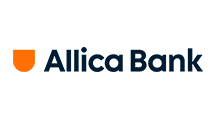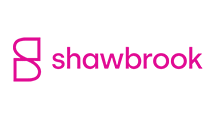Can I get a second charge bridging loan?
Yes, if you have permission from your existing lender and available equity. Some lenders will not allow further charges (borrowing) on a property, where they are already lending money secured against it. You will need to check this first.
You can borrow up to 75% of the property value on a second charge bridging loan, so your current borrowing needs to be less than this to be able to borrow more.
What’s more, it may be possible to get funds paid to you in just 48 hours, so if speed is of the essence let us know.
Factors that may impact you getting a second charge bridging loan
• If your first charge lender will not allow it
• You are already borrowing 75% of your property’s value
• Some types of adverse credit
If you have questions, chat to our advisors on live chat, via the phone, or get a call-back we're here to help.
Today's bridging loan rates
Second charge bridging loan rates differ slightly from standard rates in our bridging loan calculator; for a clear idea contact our bridging loan advisors for details.
Eligibility for a second charge bridging loan
- Approval from your 1st charge lender
- You must be over 18 years old
- Minimum deposit 25% of the property value
- Upper age limits at application are flexible
- Low personal incomes are accepted
- Property, pension and employment income is OK
Ready to get started?
Your personal advisor will call. Direct lines start 01603. Get today's rates, help, or apply. Lender terms provided in as little as two hours!
Why use a second charge bridging loan?
You may need a second charge bridging loan if you have existing borrowing on your property, but want to raise more money.
For example, if you have a bridging-loan funded renovation project underway, but need a further cash injection to complete works, where your existing lender won’t extend your borrowing, a second charge bridge could help.
Or, you may be within the deal period of a buy to let or commercial mortgage, and a new investment opportunity has arisen. You may want to avoid re-mortgaging, if you have early repayment charges to pay. A second charge could provide a solution.
Lastly, you may simply have a great existing rate on your property finance, but want to raise funds.
A second charge bridging loan complements an existing mortgage or loan. By obtaining a second charge bridging loan, the terms of your current loans remain unaffected.
This allows you to manage your monthly payments effectively while benefitting from the extra capital at your disposal.
Will I have to pay ERCs on my current borrowing?
If you’re wondering whether you will have to pay early repayment charges (ERCs) on your mortgage, if you take out a second charge bridging loan – no, you won’t. When you take out a second charge bridging loan it is separate from your mortgage and so will not affect your early repayment period.
You will not be repaying your existing borrowing with the second charge bridge, which is why there are no early repayment charges.
If you opt for a second charge bridging loan, remember that because you now have two loans to pay, you need to be sure you can afford both of them.
Is there a minimum personal income requirement?
Lenders offering second charge bridging loans are more flexible with their affordability calculations, as interest can often be added to the loan (known as “retained interest” or “rolled up interest”). This means interest can be paid either with the sale of the property, or long-term finance, and they will assess your ability to repay based on your plans.
For example, if you are renovating a property, the works you are doing will be designed to add value to it, thus long term finance will be based on a revised, higher value.
How quickly can I raise funds?
Second charge bridging loans are faster to arrange than a mortgage, this is partly because sometimes you do not have to have an in-person valuation (where a valuer visits the property to assess its value), it might be generated by online information. The other reason though is that there is far less legal work involved.
We work with a wide range of bridging loan lenders, including:
Why choose Commercial Trust?

Apply with ease by phone
It couldn't be easier to secure a bridging loan with our expert advisors. Ask all your questions and arrange an application on the phone from your sofa.
World class customer service
We'll find you a great deal and take all the admin work off your shoulders, so you can relax while we get your loan completed. All the while giving you progress updates.
Lender decision in 2 hours
By contacting you by phone and email you can get help more quickly than in-person services. It's possible to get you a lender decision in principle in as little as two hours after our call.
We can help you with...
- Funding refurbishments or renovations
- Raising a deposit for a property purchase
- Extending funding on a ground-up build
- Covering short-term business costs
- Borrowing up to 75% loan to value
- Investing in personal name or via a Limited Liability Partnership
- Investing via a limited company or Special Purpose Vehicle
- Terms from 3 to 24 months
- Serviced interest (paid monthly)
- Retained interest (paid at term end)
- Exit loan to buy to let, commercial mortgage or sale
- No minimum personal income options
- Flexible affordability calculations
- Unlimited portfolio sizes
Costs involved with a second charge bridging loan
Lenders may charge you for the valuation conducted on your property. They often also charge a product fee, sometimes this can be added to the loan.
You will need a conveyancing solicitor who will charge fees. Read our guide to choosing a conveyancing solicitor.
We charge a broker fee for our work. You pay in two parts. A booking fee, once we have found you a bridging loan deal, at application. The majority of our fee is paid at completion of the loan.
Second charge bridging loans either come with monthly payments, this is called a serviced bridging loan, or you pay all interest at the end of the term, this is a retained bridging loan.
How to apply for a second charge bridging loan
1
Tell our advisors about the property you are investing in, your needs and circumstances. If you have credit concerns, chat to us about them, so we can put you with the right lender.
2
Your advisor will find the best possible deal from a search of thousands of products. They will get you a lender decision in principle, this requires a soft credit search (occasionally it is a hard credit search).
3
Your advisor will call to discuss the product they have found for you. You will be presented with one second charge bridging loan, which is the best match for all your needs and offers you the most cost effective option.
4
On your instruction, your advisor will submit your second charge bridging loan application. Your account manager then does all liaison and administrative work to complete the deal, whilst keeping you updated at every step.
What our clients say about us
Frequently asked questions
A second charge bridging loan is a short-term loan which is secured against a property that already has a mortgage or loan attached to it. The term ‘second charge’ is referring to the fact that the loan has second priority after the main mortgage or loan. The loan runs separately to and does not affect the first mortgage or loan.
The amount you can borrow with a second charge bridging loan will depend on how much equity you have in the property, the loan to value (LTV). The amount if equity in the property will limit how much you can borrow. Also, second-charge lenders lend up to 75% of the property value, inclusive of the existing borrowing.
For example, if you existing borrowing is 50% of the value of your property, the maximum a second charge lender would give you would be a further 25% of the value of the property, meaning the total borrowing is 75% of the property value.
A mortgage lender may refuse to allow a second loan to be taken out against their security, your property, if they believe it increases the likelihood of them making a loss on sale if they repossess the property. You will need to check with your current lender if you want to take out a second charge bridging loan.
First charge borrowing describes the first product using a property as security. The second charge is essentially a second/additional loan secured against the same property.
If the property had to be repossessed, because many payments had been missed by the borrower, the first charge lender would recoup their debt before the second charge lender.
A second charge refers to a second loan on a property with pre-existing lending secured on it. A second mortgage might refer to you buying another property and having another mortgage – so two properties and two mortgages.
Similarly, if you replace one mortgage with a new mortgage this is called a “remortgage”, not a second charge








